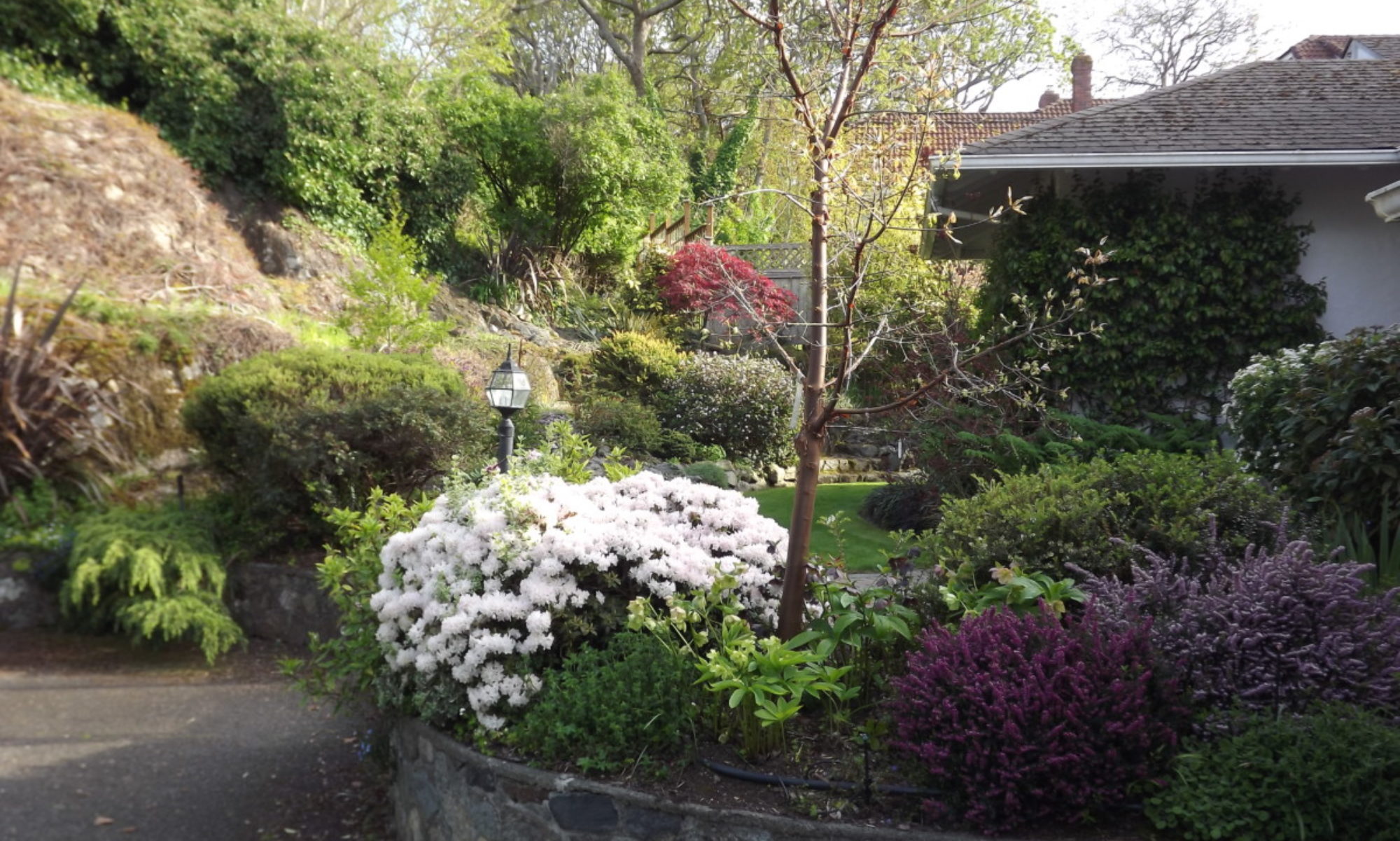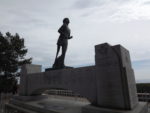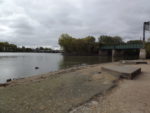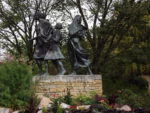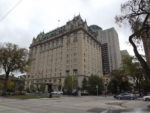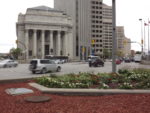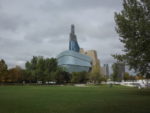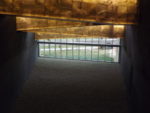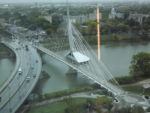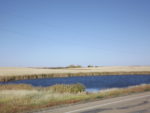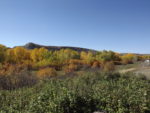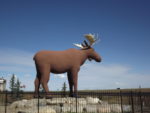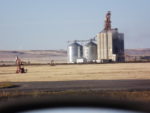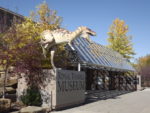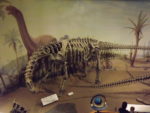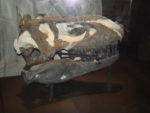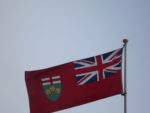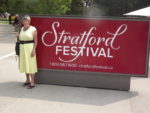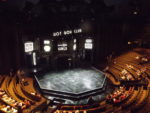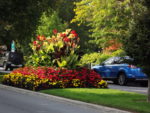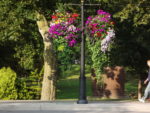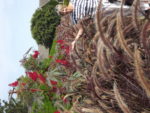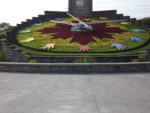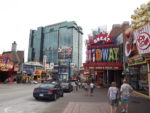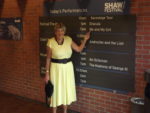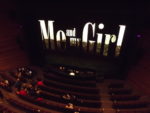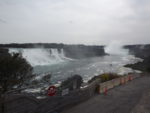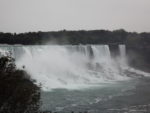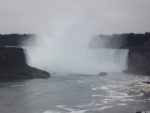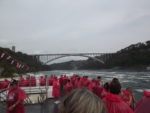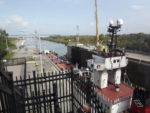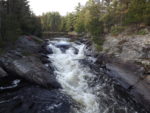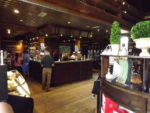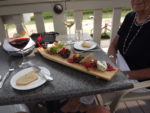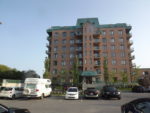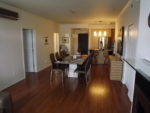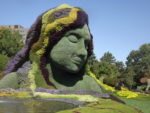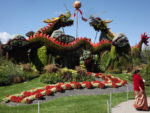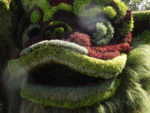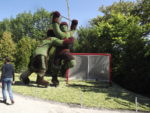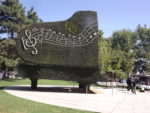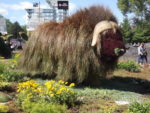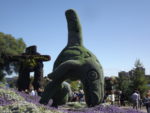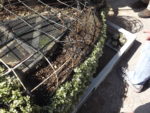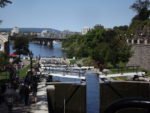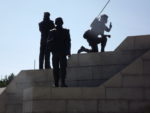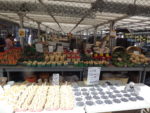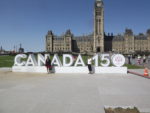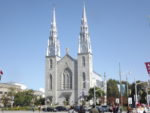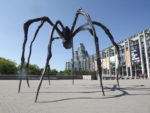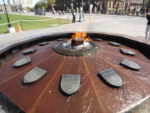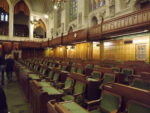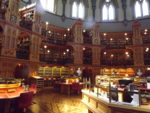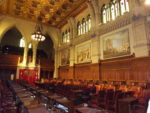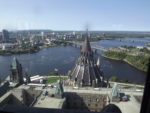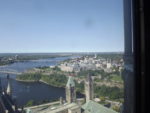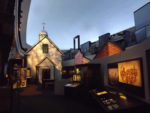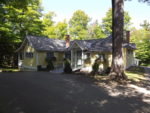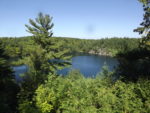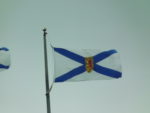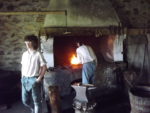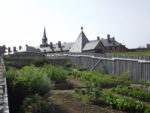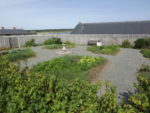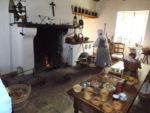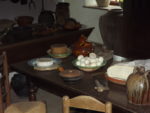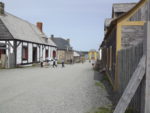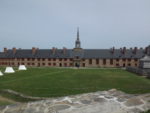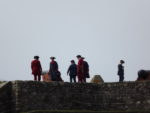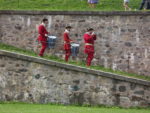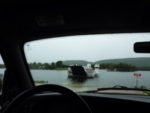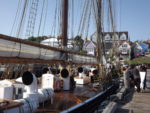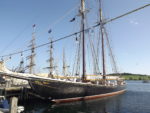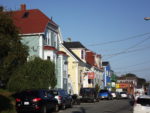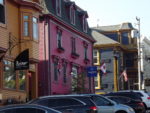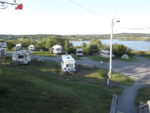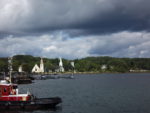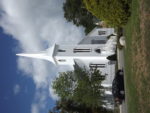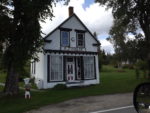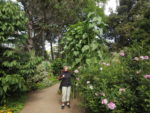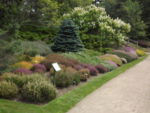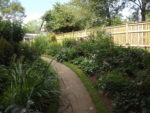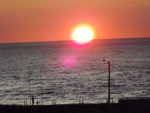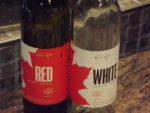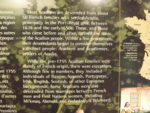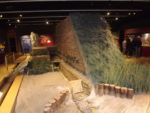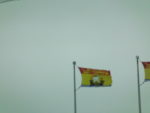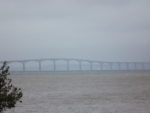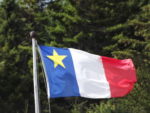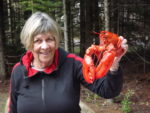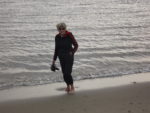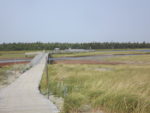Having been more than 5 weeks on the go at the end of our last blog, we decided it was time for the big push west, and we started on Wednesday (20th) from Niagara on the Lakers . 2222 km and 41/2 days later we crossed the border into Manitoba. We had heard a lot about how hard a drive this was, but found the reality much better than we had feared. Once clear of Toronto the roads were not overly busy and generally in excellent condition. Our route was along the shores of Georgian Bay to Sudbury, along the north shore of Lake Huron to Sault Saint Marie and along the north shore of Lake Huron to Thunder Bay. Particularly at the start, this was all “cottage” country and we could see the attraction as it was pretty countryside with frequent views of the big lakes and lots of small ones for canoeing on. Of interest were several Amish communities, the horse-drawn buggies along the TransCanada and the clothing of the occupants alerting us. The vastness of the country was evident and our respect for Terry Fox’s accomplishments grew enormously. In Thunder Bay we visited his memorial site, where he finally had to give up his Marathon of Hope. The fall colours were evident although they were mostly browns, oranges and yellows as most of the maples had yet to turn. Sumacs provided the reddest splashes. As we came west (and north) the forests seemed to be mostly a mix of the very yellow aspens and conifers which, in its own way, was spectacular. The rolling hills made the driving interesting and we kept ourselves to under 650 km per day, so were not too tired or late on the road. We had somehow thought that Thunder Bay was on the border with Manitoba and were somewhat taken aback to find we still had 400 km to go! This was the toughest of the driving as it was done on a very wet and cool day through most uninteresting countryside with very little habitation.
We stopped for two days in Winnipeg as we arrived on Sunday night and the Museum of Human Rights was closed on Mondays! We spent most of Monday doing a walking tour of Winnipeg (the Loop) which took us through the Forks, along the banks of the Red and Assiniboine Rivers, through the theatre district and back through downtown. It was pretty cool (max 11 degrees) and windy, especially on the corner of Portage and Main. There were many very imposing buildings like the Bank of Montreal, which had been erected when Winnipeg seemed destined to be the Chicago of the North. Now it seems rather run-down, with broken uneven sidewalks and very few interesting shops and restaurants. Perhaps the underground concourses are more interesting as the harsh winters force city dwellers below ground to access their workplaces.
The museum the next morning was altogether a different experience. It has only been open 3 years, is the only national museum outside Ottawa and was the brainchild of Isy Aspler with funding from the Asplers, other private sponsors and all levels of government. Its architecture is stunning and provides such a landmark in the city. As an acknowledgement of the fact it is built on First Nations Land the design reflects their world view. There are several ramps which represent roots into the earth, the main curved body of the building represents clouds and is topped by the Tower of Hope. The museum addresses and celebrates human rights in many forms in 7 floors of galleries, each with a theme and starting with “What are Human Rights?” And finishing on level 7 with “Inspiring Change.” The 8th level is the Israel Aspler “Tower of Hope” which is at the peak of the building with views over Winnipeg. We felt we could have spent days there as each floor had several sub-galleries and there were many video clips and interactive displays that would have been very instructive. There were a couple of elevators, but the main method of accessing the galleries was using ramps sided with translucent alabaster internally lit with LED’s. The lower floors were dark and as we moved upward it became progressively lighter, signifying the hope for the future. There were over a kilometre of ramps that could be seen from multiple places – by the time we were in the upper levels, some people were having problems dealing with the height as it was all so open. All in all very well done and thought provoking – so compelling as to be worth a special visit to Winnipeg.
The drive across Manitoba, Saskatchewan and Alberta was not at all what we had envisioned. The TCH was almost totally four-lane divided highway and much less busy than we had anticipated. There was one stretch of 150 km just west of Swift Current where we passed a total of 6 trucks while being overtaken by just one car! This while the cruise control was set at 107 on a 110 km/h road! Also, having driven in the deserts of California, Arizona, Nevada and Australia, we had expected the roads to be dead straight and flat and surrounded by brown fields. The reality was that there was much more colour (including green), water, undulations and curves than we had expected. We are now over the 10,000 km mark on our journey – our longest day’s drive (Brandon to Gull Lake, west of Swift Current) of 679 km was much easier and more interesting than anticipated. In eight days we have covered 3700 km, but are now within striking distance of BC.
Our final stop in the prairies was a detour off the TCH to Drumheller and the Royal Tyrell Museum. This is situated in the badlands of Alberta where the Red River has exposed a cornucopia of fossils, many of them dinosaurs, but including many other species of animals. It is a huge complex and there are numerous full size skeletal creatures, several of them made of the actual fossils with man-made fill-ins for missing pieces. We had thought that many of the depictions of dinosaurs involved a great deal of conjecture but realized that recent excavations have furnished so much material to support their weird and wonderful appearance, even down to the texture of their skin. It is a modern museum with lots of touch screens, videos etc and is geared to educate about paleontology, geology and evolution. We happily spent a couple of hours there
We will write a wrap-up blog once we are back in Victoria, probably just before the Thanksgiving weekend. How long we stay in the Okanagan where we are now headed will depend largely on the weather.
